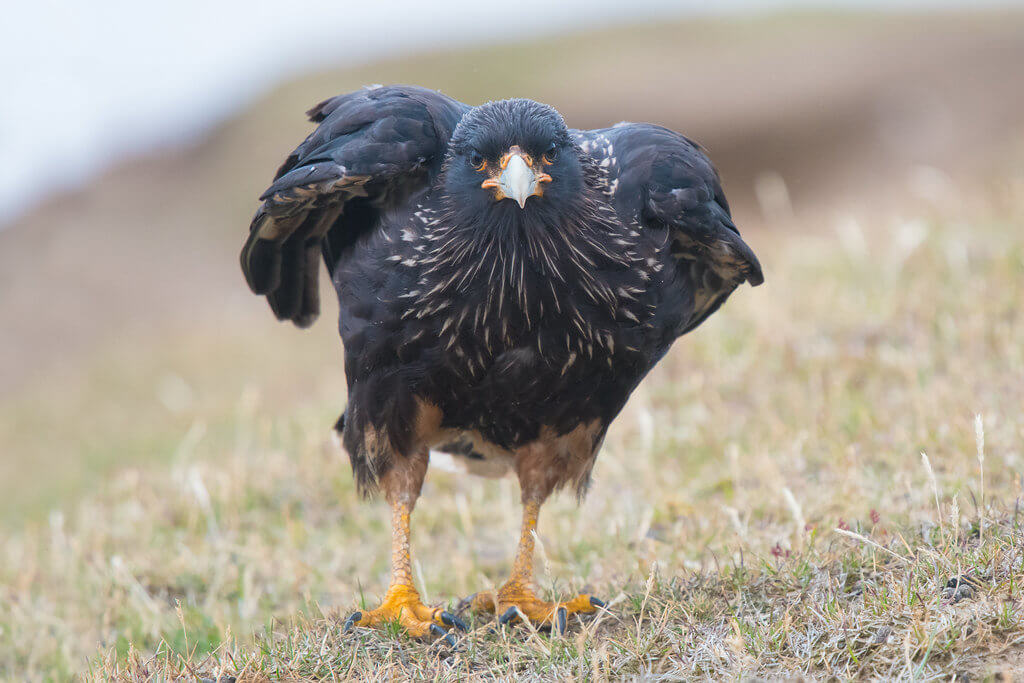
Tim writes: Striated Caracara is now a very rare bird. It breeds on a few islands off Tierra del Fuego but is commonest on the Falkland Islands. But the numbers on the Falklands are massively depleted so the population there is only around 500 pairs. They are totally indifferent to humans, which led to their downfall when formerly sheep farmers perceived them as a problem to livestock. But it is primarily a scavenger, feeding on carrion around seabird colonies, especially penguins. But they will also prey on weak or injured creatures, including new-born lambs, which led to conflict.
Caracaras are very closely related to falcons, but not to other birds of prey. DNA studies have shown without doubt that Caracaras and Falcons are not closely related to Eagles and Hawks, but their predatory life has led to similarities through convergent evolution. This is bit like Guillemots and Penguins looking the same because of a similar lifestyle. So who are Caracaras closely related to? Almost unbelievably it is Parrots. Parrots, Caracaras and Falcons share large sequences of highly conserved genes within their genome that are markedly different from other birds of prey. This explains why up-to-date field guides and checklists place them in a different place from Eagles and Hawks.
Incidentally the name Caracara is a Tupi word for this family of birds, and striated refers to those pale streaks on the chest. Its scientific name Phalcoboenus australis translates as Southern Walking Falcon. I photographed this adult near a penguin colony on Saunders Island in the Falklands.
[registration_form]
Fascinating. Thank you. These one-page vignettes are wonderful, like taking a big book of Birds of the World and just opening it randomly.